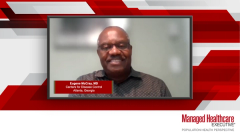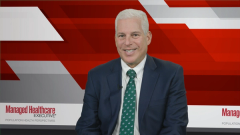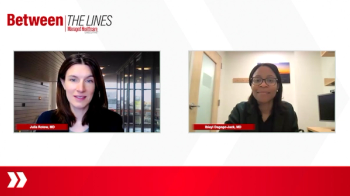Health Disparities Leading to Increased Risk of MDR HIV
Health disparities in HIV treatment management are discussed by Drs Peskin and McCray.
Episodes in this series
Steven Peskin, M.D., MBA, FACP: In thinking about risk factors for HIV [human immunodeficiency virus], those are pretty well known. They are things like IV [intravenous] drug abuse and sharing needles, men who have sex with other men, but it is also transmitted through heterosexual sexual activity. These are the primary ways HIV is transmitted. We know the tragedy of a famous tennis player, Arthur Ashe, who got HIV from a transfusion. That rarely happens, but it does still happen. So, the risk behaviors that are associated with the transmission of HIV disease most notably are: through sexual activity, unprotected sexual activity, and intravenous drug use where needles might be shared.
Eugene McCray, M.D.: I think one of the major health disparities is lack of access to health care, or poor quality of health care when people do get into a clinic. This is particularly true for African American and LatinX communities, especially men who have sex with both men and women. People with HIV living in the South of the United States, particularly in rural areas, are also at significant risk for developing drug-resistant HIV because of, again, intermittent and limited access to good care.
The biggest risk factor we see consistently is homelessness or unstable housing. When people are homeless or have unstable housing, it’s very difficult for them to take their medicine as prescribed. We tend to see drug resistance develop in these people fairly early in the process if they’re not supported and helped. Then other risk factors are things like mental health and substance use, things that I described in the patient earlier. And of course, being uninsured or underinsured, this is particularly true in the Southern states where there was no Medicaid expansion, and there are folks who were not able to get on the national Obamacare Affordable Care Act program, etc. Then finally, things like lack of transportation. Again, that’s directly related to being in rural areas, or in urban areas where there’s not adequate public transportation, or people don’t have the funds to use public transportation.
Several social determinants I mentioned already are things like being uninsured or underinsured, having inconsistent access to medication, depression, or other mental illnesses. A low level of social support is an important one because in households or communities where there’s a low level of social support for persons living with HIV on treatment, they tend to fall out of treatment and are at risk of getting HIV as well as drug-resistant HIV. Low health literacy is another one that’s clearly associated with both acquisition of HIV and drug resistance among persons getting treatment for HIV.
Then, of course, stressful life events. When people have stressful life events, which often happens when you’re homeless or you’re poor, or there’s lots of sexual violence in your household, etc., those are things that can all lead to both HIV acquisition and development of HIV drug resistance.
Transcript edited for clarity.
Newsletter
Get the latest industry news, event updates, and more from Managed healthcare Executive.


















































